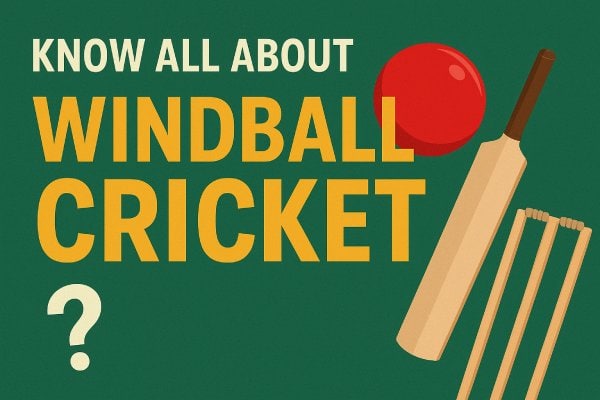
Cricket is played in many formats around the world – from the traditional five-day Test matches to the lightning-fast T20s. But outside the stadiums, in streets and backyards, cricket has its own variations. One of the most unique and entertaining versions is Windball Cricket, especially popular in the Caribbean and among casual cricketers.
In this blog, we’ll cover everything you need to know about windball cricket – its history, rules, equipment, and why it has become such a beloved version of the game.
What Is Windball Cricket?
Windball cricket is a simplified and faster version of cricket played with a specially designed windball – a brightly colored, soft plastic ball. Unlike the traditional leather ball, the windball is:
- Softer and lighter
- Made of PVC or rubber-like material
- Less likely to cause injury
- Suitable for concrete, asphalt, and backyard grounds
Because of these features, windball cricket is widely played in schools, local communities, and recreational tournaments.
Origin and Popularity of Windball Cricket
- Caribbean Roots: Windball cricket is most famous in the Caribbean, especially Trinidad and Tobago, where it developed as an alternative to leather-ball cricket due to limited access to turf pitches.
- Street & Beach Culture: Just like tape-ball cricket in Pakistan or gully cricket in India, windball cricket became part of street culture in the Caribbean.
- Global Reach: Today, you’ll find windball cricket played in parks, beaches, and community tournaments across the UK, US, Canada, and South Asia.
The Windball Itself
The windball is the heart of this version of the game. Key features include:
- Bright Colors: Usually red, orange, or yellow for visibility.
- Durability: Strong enough to last on hard surfaces like concrete or asphalt.
- Bounce: Offers consistent bounce, making batting fun and bowling challenging.
- Affordability: Much cheaper than a cricket leather ball, making it accessible.
Windball Cricket Rules
While the spirit of the game is the same as cricket, windball cricket has its own set of rules, often tailored to community tournaments. Common rules include:
- Pitch Length: Usually shorter than standard 22 yards (often 16-18 yards).
- Overs: Matches are often short-5, 10, or 12 overs per side.
- Bowling Style: Overarm is common, but underarm is allowed in some variations.
- Batting: Regular cricket bats are used, though some prefer lighter bats.
- Field Size: Can be adjusted to suit small grounds, beaches, or parks.
- Protective Gear: Since the ball is softer, most players don’t wear pads or helmets.
Why Is Windball Cricket So Popular?
- Accessibility: You don’t need turf pitches or full cricket gear.
- Fast-Paced: Short overs and smaller grounds make it exciting.
- Safe & Inclusive: Great for kids, beginners, and mixed-gender teams.
- Community Spirit: Often played in local leagues or friendly neighborhood matches.
- Entertainment: The lively atmosphere, music, and crowds in Caribbean windball tournaments give it a festive feel.
Windball Cricket Tournaments
Windball cricket has grown beyond casual street games. In the Caribbean:
- Night Windball Cricket Leagues are popular, attracting big crowds.
- Matches often feature music, commentary, and food stalls, making it a festival-like experience.
- Local stars sometimes emerge from these leagues, gaining recognition before moving to professional cricket.
Differences Between Windball and Regular Cricket
| Feature | Windball Cricket | Leather-Ball Cricket |
|---|---|---|
| Ball | PVC/Rubber, soft, colorful | Leather, hard, traditional |
| Pitch Length | 16–18 yards (flexible) | 22 yards fixed |
| Gear Required | Minimal (bat, ball, stumps) | Full kit (pads, gloves, helmet) |
| Match Duration | 5–12 overs per side | 20–90 overs per side |
| Venue | Streets, beaches, backyards | Professional stadiums |
Final Thoughts
Windball cricket is proof that you don’t need expensive cricket gear or professional pitches to enjoy the game. With just a bat, a windball, and some friends, you can create unforgettable matches filled with energy, laughter, and competitive spirit.
Whether you’re in the Caribbean, India, or anywhere else, windball cricket is one of the best ways to experience cricket in its most accessible and joyful form.
Leave a Reply